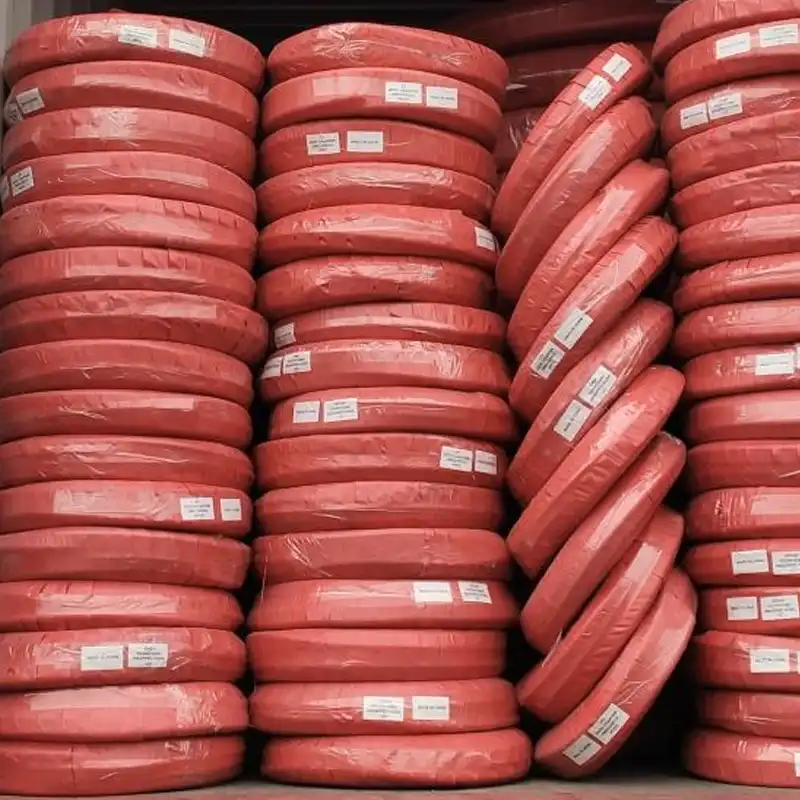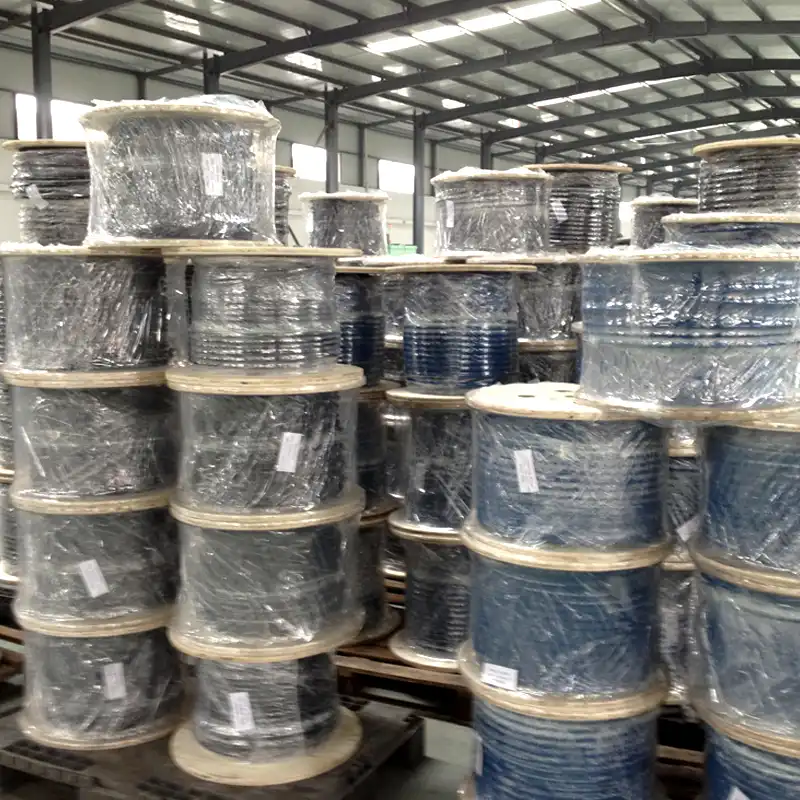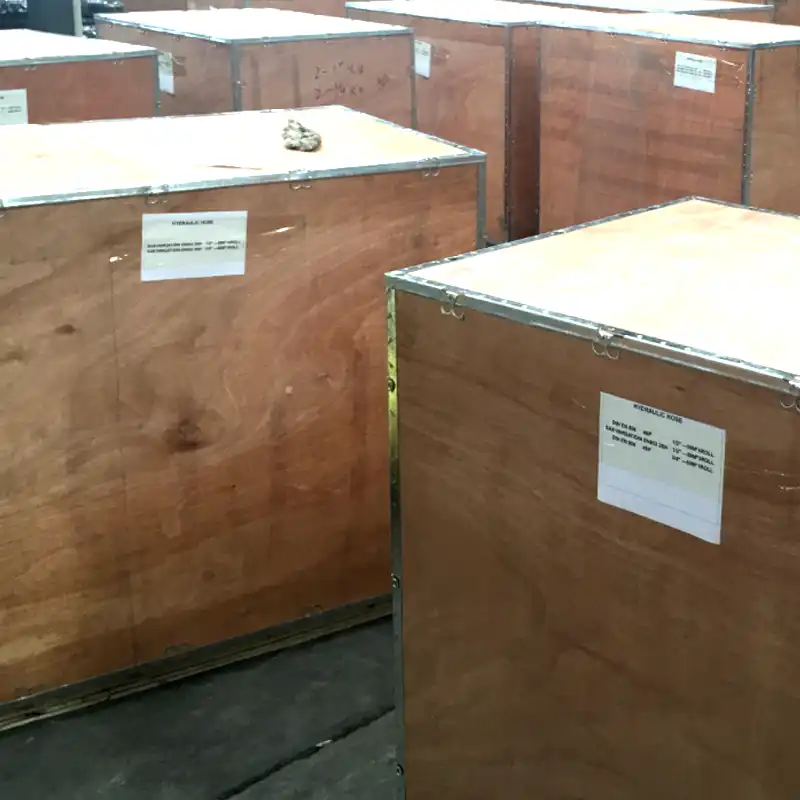Before loading hydraulic hoses onto a container for shipment, the following packaging methods are commonly used: Here are some trending hydraulic hose packaging methods that we can provide to satisfy your requirement.
Firstly, the hydraulic hoses manufactured in the factory undergo various tests, including working pressure assessments, burst evaluations, and pulse trials.
Then, these hoses are prepared for distribution. They are packaged, identified with labels, and stored in warehouses pending dispatch.
Finally, the preferred method for packing these hydraulic hoses is using woven belts or PE plastic film, to roll hydraulic hoses . This approach is both eco-friendly and cost-efficient. However, if desired, alternative packaging options, such as wooden boxes, can be arranged.
Here we can provide different packing methods for hydraulic hose shipping, including rolls, reels, pallets and wooden cartons.

Hydraulic hoses can be meticulously packed for safe delivery. We meticulously coil them into rolls, preserving their form and function, and secure them with robust, durable material. The protective packaging ensures each hose remains unscathed, even in transit, guaranteeing high-performance and longevity. Invest in quality, order your hydraulic hoses today.

Ensuring the longevity and performance of your hydraulic hoses begins with proper packing. Ideally, they should be coiled methodically around hydraulic hose reels, an indispensable tool providing an orderly, space-efficient, and safe storage solution. Coiling mitigates the risk of twists, kinks, and strain on the hose. You can choose the reel to pack hydraulic hose before loading them to the container.

Hydraulic hose packing with pallets can ensure safety. We use the uniquely designed pallets that keep the hoses secure, preventing damage and tangling. These pallets, made of strong, durable wooden materials, allow for optimal stacking, efficient transport, and easy access. It’s time to choose proper hose packing pallets for your hydraulic hose shipping.

Our hydraulic hoses are meticulously packed to ensure optimal safety and reliability. Using durable wooden cartons is the best method to ship hydraulic hoses. Wooden cartons are strategically arranged to prevent kinks and bends, maintaining the hose integrity during transit. Experience the difference; order your hydraulic hoses from us today!
Shipping hydraulic hoses involves a process of safe packaging, transport, and delivery from the manufacturer or distributor to the end consumer or businesses. These hoses are used in various industries like construction, manufacturing, automotive, and other heavy machinery sectors, so their transportation is crucial. They come in various sizes, lengths, and specifications, and handling these differences appropriately is key to effective shipping.
Throughout all of these stages, a focus on efficiency, cost-effectiveness, and product safety is key. Many companies work with logistics providers who can handle these aspects professionally and ensure that the hydraulic hoses reach their destination in good condition and on time.